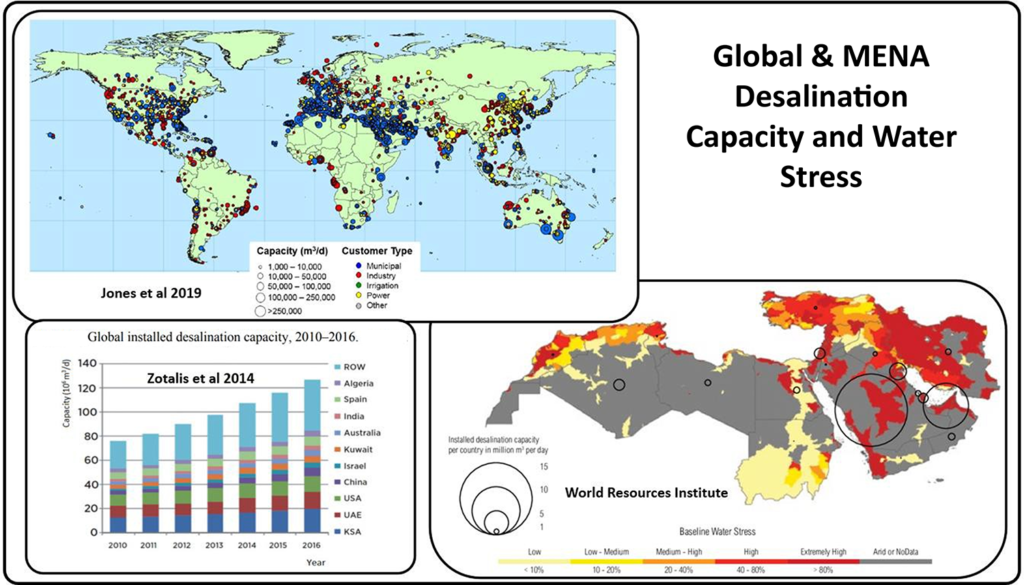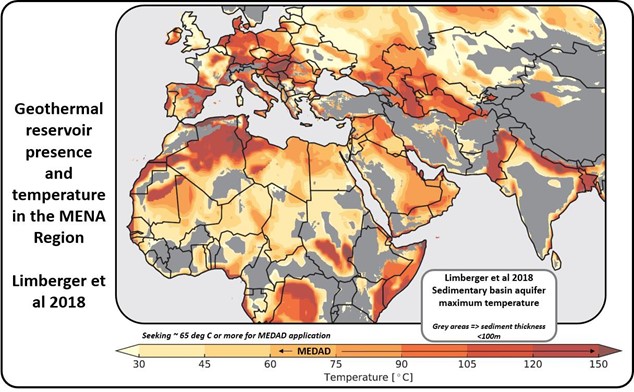SAGE Record 101, Waters and Shahzad
Waters, D., and M. W. Shahzad, 2022, Geothermal desalination in energy budgets of water stressed nations—Activation for North Africa and the Makran: SAGE Record 101, 3 p., <http://sagetech.org/sage_record_101_waters/>. Oral presentation at SAGE/ESSL BIGEC 2022, 30 Aug.–01 Sept. 2022, Benghazi, Libya, and Online.
Geothermal Desalination in Energy Budgets of Water Stressed Nations—Activation for North Africa and the Makran
Dave Waters (Paetoro Consulting UK Ltd, London, UK) and Muhammad Wakil Shahzad (Department of Mechanical and Construction Engineering, Northumbria University, Newcastle Upon Tyne, UK)

The perpetual challenge of geothermal energy is less in discerning what can be achieved with it technically, than discerning where it can be deployed cost competitively against alternatives. Geothermal energy can of course be used for desalination, but can it also be cost-effective?
Desalination in a water-stressed globally warming world of 8 billion people, is a huge rapidly growing industry expected to be worth over US $25 billion in market revenue by 2025. The Middle East region has historically been responsible for about half of this demand. While North African deployment has been more subdued, the rapidly growing economies of coastal North Africa, an abundance of solar energy, and vulnerability to climate change, seem likely to propel desalination to the front line of energy demand there also. Egypt has been one of the largest investors in desalination in recent years.
Although there are other desalination routes possible, the dominant methods of desalination today are membrane methods (e.g. reverse osmosis–RO) or thermal methods (e.g., multi-stage flash–MSF or multiple effect distillation–MED). Thermal methods rely on supplied heat; membrane methods on filtration. Traditional thermal methods can work with input temperatures between 125 deg C and as low as 45 deg C, but the higher the temperature, the greater the issues with scale. An optimum temperature for thermal methods is around 65 deg C.
Over recent decades, RO has dominated the largest plants for reasons of energy efficiency. The best state of the art RO plant can be 170% more efficient in terms of m3 fresh water per kWhSPE (standard primary energy) than an MED plant. An MED plant can in turn be more than twice as efficient as an MSF plant. For this reason, MED plants dominate the thermal type. RO plants do however have other issues—including reject water effluents and algal blooms and are less suited to the high-temperature high-salinity environments prevalent in the “MENA” region.
MEDAD technologies have used an additional adsorption-desorption (AD) extension to MED to significantly increase the efficiency of thermal desalination, along with other benefits. A working PILOT with KAUST (King Abdullah University of Science and Technology) has a 119% efficiency improvement over the best RO plants, and even greater improvements are targeted. If repeatable at scale, this dramatically raises the profile of thermal desalination in future investment.
Saline and coastal aquifers are abundant in many parts of the world and are well documented in areas of historical oil and gas exploration. Two regions have been highlighted for scoping investigation: North Africa, especially Egypt-Libya and Tunisia, and the Makran of Pakistan and Iran. These are regions of significant population density and increasing water stress with well understood lithostratigraphy and coastal geothermal reservoir potential – understood thanks to historical oil and gas exploration. Critical geoscientific uncertainties are permeability architectures and sustainable flow rates.
The key competition in both regions for the provision of thermal desalination heat, is cheap fossil fuel resources, and solar energy. In this analysis, geothermal desalination is placed in a holistic value context, optimising all a region’s energy options for cost and decarbonisation. That geothermal energy can do desalination frees up renewable energy sources for other rapidly growing sectors of these fast-growing, water-stressed regions. For the high population economies of Egypt, Iran, and Pakistan, this is vital to prosperity in the face of increasing heat and water stress. For the lower population economies of Tunisia and Libya, this opens up opportunities for improved standard of living domestically, horticultural developments, and potential export of power from other renewables to neighbouring countries and further afield.




